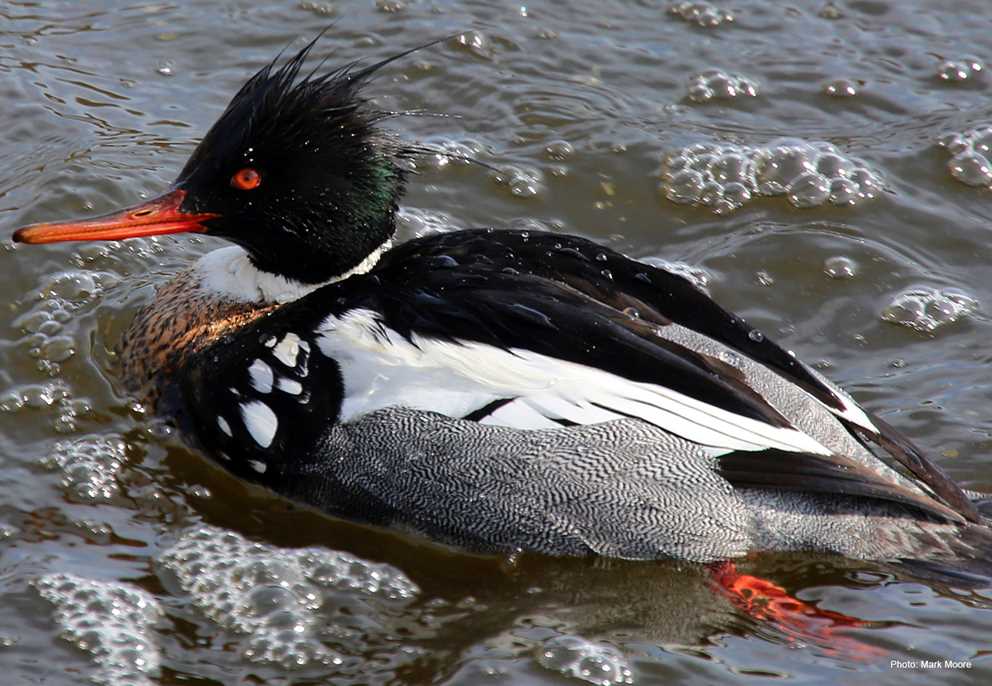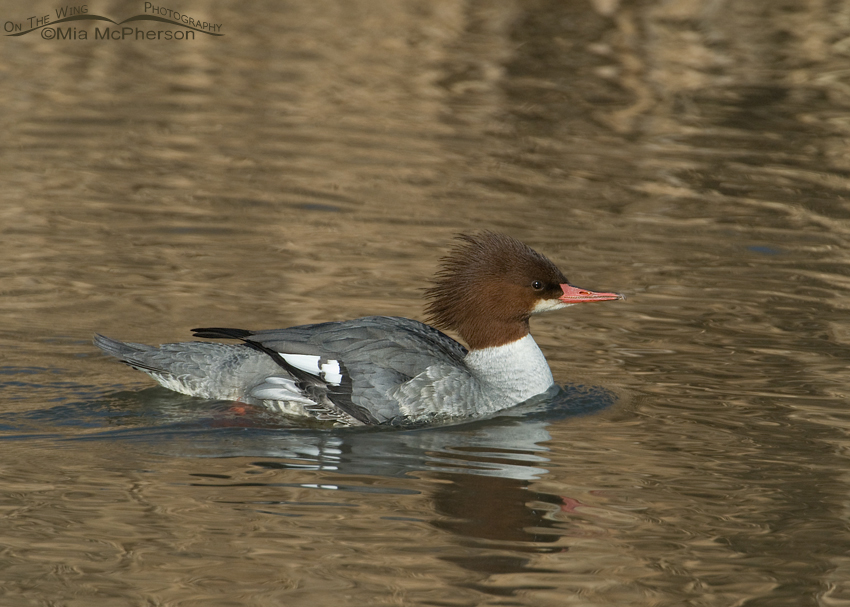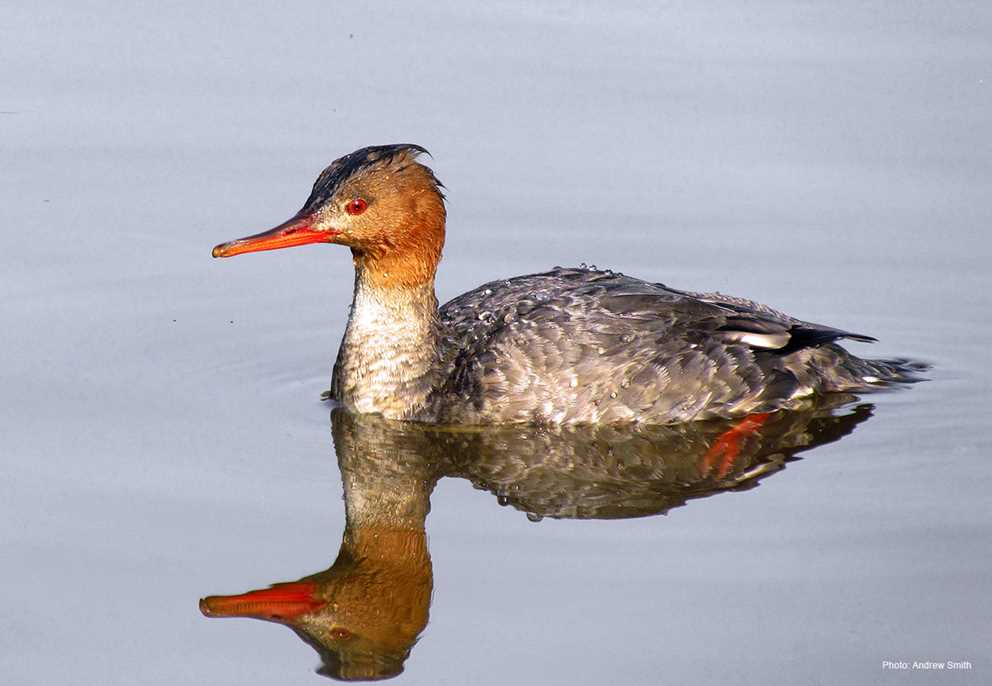Bird enthusiasts often find themselves comparing the Red Breasted Merganser and the Common Merganser. These two striking waterfowl have distinct characteristics and behaviors.
Understanding the differences between these two species can deepen your appreciation for them. Both the Red Breasted Merganser and the Common Merganser are fascinating to observe, but they each have unique traits. By comparing them, you can learn more about their habits, habitats, and identifying features.
This knowledge can enhance your birdwatching experience and provide valuable insights into their roles in the ecosystem. Let’s delve into the intriguing world of these two mergansers and discover what sets them apart.

Credit: www.ducks.org
Introduction To Mergansers
When you think of ducks, you might not immediately picture the sleek and agile mergansers. These fascinating waterfowl are known for their striking appearance and excellent diving skills. In this post, we’ll compare two intriguing species: the Red-breasted Merganser and the Common Merganser. Let’s dive into the world of these captivating birds.
Species Overview
Red-breasted Mergansers and Common Mergansers belong to the same family but have distinct characteristics. The Red-breasted Merganser, with its spiky crest and reddish-brown chest, is a striking sight. The Common Merganser, on the other hand, showcases a sleek, glossy head and a more streamlined body.
I remember the first time I spotted a Red-breasted Merganser. Its fiery chest stood out against the icy lake, a stark contrast to the snowy surroundings. It was a moment that made me appreciate the unique beauty of these birds.
Habitat And Range
These two species have different preferences when it comes to their habitat. The Red-breasted Merganser is more adaptable, often found in coastal waters, lakes, and rivers. It has a broad range, spanning across North America, Europe, and Asia.
In contrast, the Common Merganser prefers freshwater lakes and rivers. It is widespread across North America and Eurasia. If you live near a large lake, chances are you’ve seen a Common Merganser gliding gracefully across the water.
Have you ever wondered why these birds choose different habitats? It’s all about the availability of their favorite prey – fish. Each species has adapted to thrive in environments where they can easily catch their meals.
Understanding their habitat and range can help you spot these birds in the wild. Next time you’re near a body of water, keep an eye out for these elegant divers. You might be surprised at what you find.
Physical Characteristics
Red Breasted Mergansers and Common Mergansers have distinct physical traits. These differences help bird watchers identify them easily. This section explores their size, weight, and plumage.
Size And Weight
Red Breasted Mergansers are medium-sized ducks. They range from 20 to 25 inches in length. They weigh between 2 and 3 pounds. Common Mergansers are slightly larger. They range from 23 to 28 inches in length. They weigh between 2.5 and 4.5 pounds. This size difference is noticeable in the wild.
Plumage Differences
Red Breasted Mergansers have striking plumage. Males have a green head and rusty chest. Females have a reddish-brown head with a grey body. Common Mergansers have simpler colors. Males have a white body and a dark green head. Females have a grey body and a reddish-brown head.
The plumage differences are clear. These differences make it easy to tell the species apart.
Behavioral Traits
When comparing the Red-breasted Merganser to the Common Merganser, their behavioral traits offer fascinating insights. These two species, though similar in appearance, exhibit distinct habits that set them apart in the wild. Understanding their feeding habits and migration patterns helps bird enthusiasts and casual observers alike to distinguish between them.
Feeding Habits
Red-breasted Mergansers are often seen diving swiftly and deeply for their meals. They primarily feed on small fish and can be quite the acrobats underwater. You might spot them hunting in coastal waters or large lakes, sometimes in groups, making a splash as they pursue their prey.
In contrast, Common Mergansers prefer calmer waters such as rivers and freshwater lakes. Their diet is similar, consisting mainly of fish, but they also add crustaceans and aquatic insects to their menu. Watching a Common Merganser hunt is a lesson in precision; they glide smoothly and strike with remarkable speed.
Migration Patterns
Red-breasted Mergansers are known for their extensive migration journeys. They breed in the northern regions of North America and travel south during the winter. You might find them along the coasts of the United States, enjoying the warmer climates.
Common Mergansers, on the other hand, have a slightly more conservative migration pattern. They also breed in northern areas but tend to migrate shorter distances, often moving to nearby unfrozen bodies of water. If you live near a large river or lake, chances are you might see these elegant birds year-round.
Have you ever noticed these fascinating behaviors in your local waterfowl? Observing their unique traits can be a rewarding experience. It’s amazing how much you can learn by simply paying attention to the birds around you.

Credit: www.onthewingphotography.com
Breeding And Nesting
Red Breasted Mergansers prefer coastal areas for breeding, while Common Mergansers nest near freshwater lakes and rivers. Both species use cavities or nest boxes to lay eggs, providing a safe environment for their young.
The Red Breasted Merganser and the Common Merganser have interesting breeding habits. These ducks are known for their unique nesting choices and reproduction cycles. Understanding their breeding and nesting behavior can help bird enthusiasts spot them more easily.Nesting Sites
Red Breasted Mergansers prefer coastal regions and islands. They often nest in dense vegetation near water. Their nests are usually hidden among reeds or grasses. Common Mergansers choose forested areas near lakes or rivers. They prefer hollow trees or rock crevices for nesting. Sometimes, they use old woodpecker holes.Reproduction Cycles
Red Breasted Mergansers lay eggs in late spring. A female can lay up to 12 eggs. Incubation lasts about a month. Common Mergansers also lay eggs in late spring. They can lay between 6 to 17 eggs. The incubation period is similar, about 30 days. Understanding these habits helps in identifying their nests. It also aids in protecting their habitats. “`Diet And Hunting Techniques
When observing the fascinating world of ducks, the diet and hunting techniques of the Red-breasted Merganser and the Common Merganser stand out. These two species, while similar in many ways, have distinctive methods and preferences that set them apart. Let’s dive into what makes their feeding habits unique.
Prey Preferences
The Red-breasted Merganser and the Common Merganser both have a penchant for fish, but they don’t always go for the same types. Red-breasted Mergansers often hunt in coastal waters, targeting small fish like herring and smelt. They also enjoy a side of crustaceans and insects.
Common Mergansers prefer freshwater habitats. Their diet mainly consists of larger fish such as trout and salmon. They aren’t picky eaters, though. You’ll find them snacking on amphibians, mollusks, and even small mammals.
Have you ever wondered how a bird’s habitat influences its diet? The Red-breasted Merganser’s coastal choice means it has access to a different variety of prey compared to the Common Merganser’s freshwater pickings. This diversity makes their feeding habits a perfect subject for study.
Hunting Methods
Both species are skilled divers, but their hunting techniques show some interesting differences. Red-breasted Mergansers are known for their speed. They chase down their prey underwater, using their serrated bills to grasp slippery fish. It’s an exciting chase to witness!
Common Mergansers use a more ambush-based strategy. They prefer to stalk their prey slowly, often hunting in groups. This method allows them to corner fish and catch them with ease. Their strong, pointed bills are perfect for seizing and holding onto their meals.
Imagine watching a group of Common Mergansers quietly surround a school of fish before striking. It’s a testament to their cooperative hunting skills. On the other hand, the solo speed chase of a Red-breasted Merganser is equally thrilling in its own right.
Next time you observe these remarkable birds, pay attention to their different techniques. You might find yourself fascinated by the strategic diversity in their hunting methods. Which technique do you think is more effective?
Vocalizations And Communication
When observing the Red Breasted Merganser and the Common Merganser, their vocalizations and communication methods play a crucial role in understanding their behaviors and interactions. Both species have unique ways of expressing themselves, which can be fascinating to bird enthusiasts. Let’s dive into the distinct call types and communication methods these birds use.
Call Types
The Red Breasted Merganser is known for its distinctive calls. Males produce a series of low, raspy “grrr” sounds during courtship. Females, on the other hand, emit softer, more subdued calls.
In contrast, the Common Merganser has a different vocal repertoire. Males often produce a soft, croaking call, while females use a series of short, sharp quacks. These calls play a crucial role during mating and when alerting each other to potential dangers.
Communication Methods
Red Breasted Mergansers use visual displays along with their vocalizations. During courtship, males perform elaborate head throws and wing flapping to attract females.
Common Mergansers also rely heavily on visual signals. They often use body posture and synchronized swimming as part of their communication strategy. Watching these birds interact can offer insights into their complex social behaviors.
Next time you observe these mergansers, pay close attention to their calls and actions. What do you think they are communicating? Understanding their language can enhance your bird-watching experience.
Conservation Status
The Red-breasted Merganser and Common Merganser both face varied conservation challenges. Their population trends differ across regions. Active monitoring helps protect these species.
Both the Red Breasted Merganser and Common Merganser face challenges in the wild. Their conservation status helps us understand their population health. Monitoring these species ensures their continued survival.Population Trends
The population of Red Breasted Mergansers has seen fluctuations over recent years. They breed in northern regions and migrate south for winter. Common Mergansers have a more stable population. They breed in freshwater lakes and rivers. Both species benefit from conservation efforts.Threats And Protections
Red Breasted Mergansers face threats from habitat loss and pollution. Wetland destruction affects their breeding sites. Common Mergansers also face similar threats. Water pollution impacts their food sources. Conservation measures include protecting habitats and reducing pollution. Both species are monitored to ensure their numbers remain stable. “`
Credit: www.ducks.org
Observing In The Wild
Observing the Red Breasted Merganser and the Common Merganser in the wild is a thrilling experience. Both species are fascinating to watch, with their unique behaviors and striking appearances. Whether you’re a seasoned birdwatcher or a curious beginner, spotting these ducks can be a rewarding adventure.
Best Viewing Spots
If you’re looking to catch a glimpse of the Red Breasted Merganser, coastal waters are your best bet. These birds are often found diving in bays and estuaries, especially in colder months. Head to places like the Atlantic coast or the Great Lakes for a higher chance of sighting.
Common Mergansers, on the other hand, prefer freshwater lakes and rivers. They thrive in clear, calm waters where they can easily spot fish. You might find them in forested areas with secluded lakes or slow-moving rivers. Locations like the northern United States or Canada are prime spots.
Tips For Birdwatchers
Patience is your best friend. Both mergansers can be elusive, diving underwater for long periods. Bring binoculars for a closer look, and keep your distance to avoid scaring them away.
Early mornings and late afternoons are the best times to observe. Birds are more active during these hours, offering you better chances of sighting. Dress warmly and wear muted colors to blend into the environment.
Listen for their calls. Red Breasted Mergansers have a distinctive grating call, while Common Mergansers make softer, croaking sounds. Familiarizing yourself with these can help in locating them.
Have you ever noticed how different behaviors can be between species? Observing these mergansers can teach you a lot about adaptability and survival in the wild.
What unique behaviors have you observed in birds? Share your experiences and let’s learn together!
Frequently Asked Questions
What Is The Difference Between A Common Merganser And A Red-breasted Merganser?
Common mergansers have white bodies and green heads. Red-breasted mergansers have darker, spikier crests and slimmer bodies.
Are Red-breasted Merganser Rare?
Red-breasted mergansers are uncommon but not rare. They are frequently seen during migration and winter in coastal areas.
What Is The Difference Between A Common Merganser And A Hooded Merganser?
A common merganser has a larger body and straight bill. A hooded merganser has a smaller body and a fan-shaped crest.
How Do You Identify A Common Merganser?
Identify a common merganser by its green head, white body, and red bill. Females have gray bodies and reddish-brown heads.
Conclusion
Both the Red Breasted Merganser and Common Merganser have unique traits. Observing their differences helps in understanding their behaviors. Bird watchers can enjoy spotting these fascinating ducks. Whether it’s the Red Breasted’s vibrant chest or the Common’s sleek appearance, both species delight nature enthusiasts.
Next time you visit a lake, watch out for these interesting birds. Appreciating their distinctions deepens our love for wildlife. Enjoy your birdwatching adventures!
